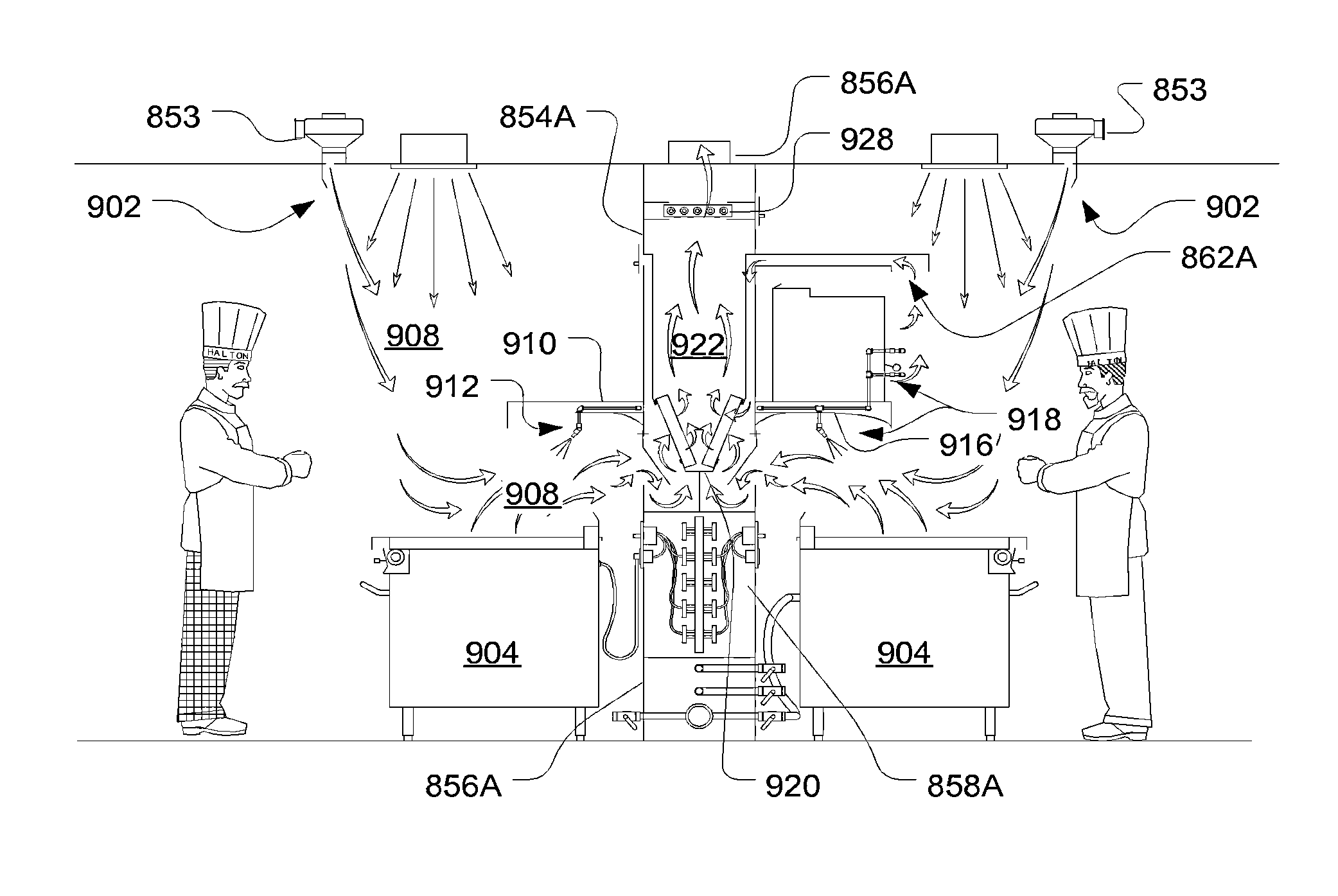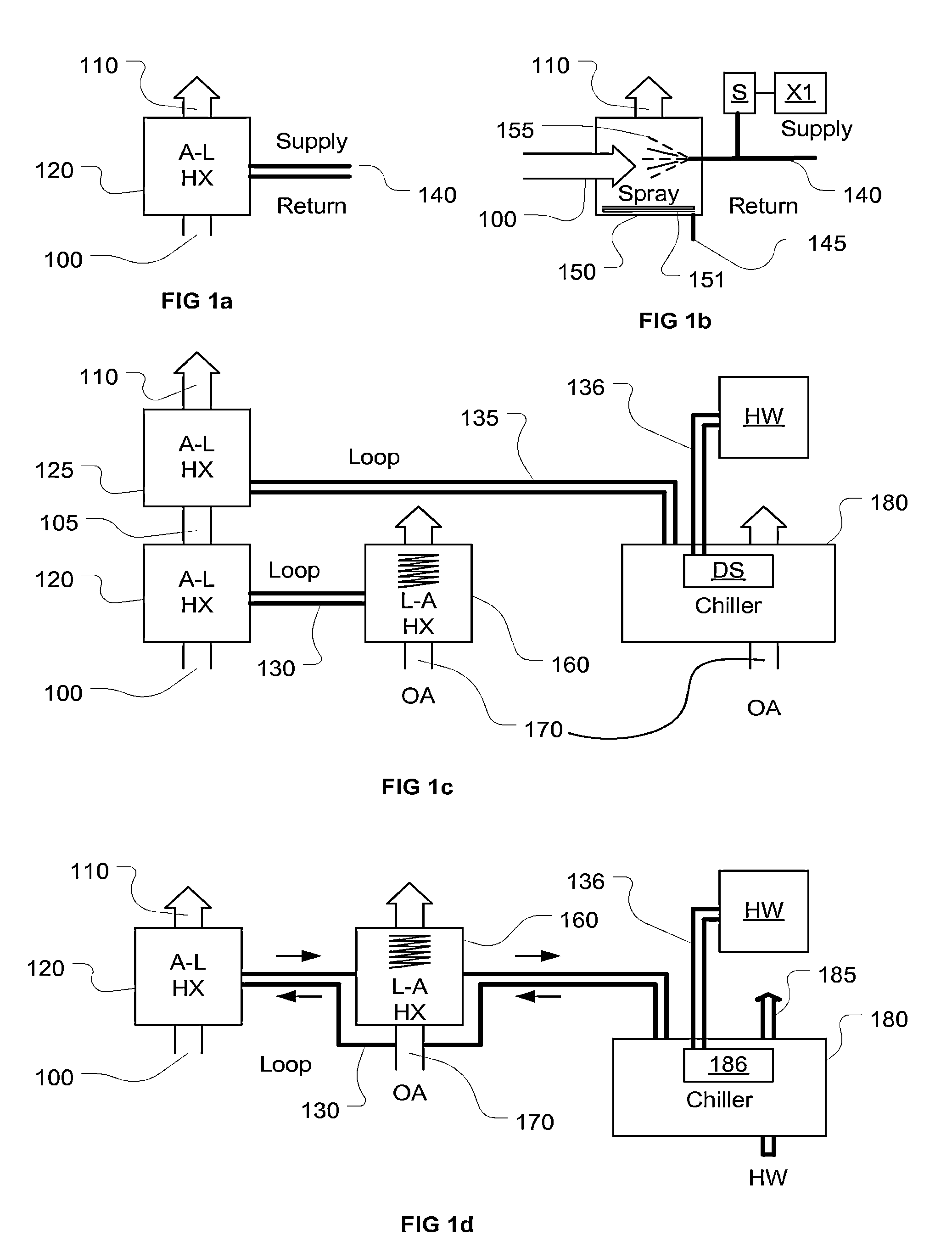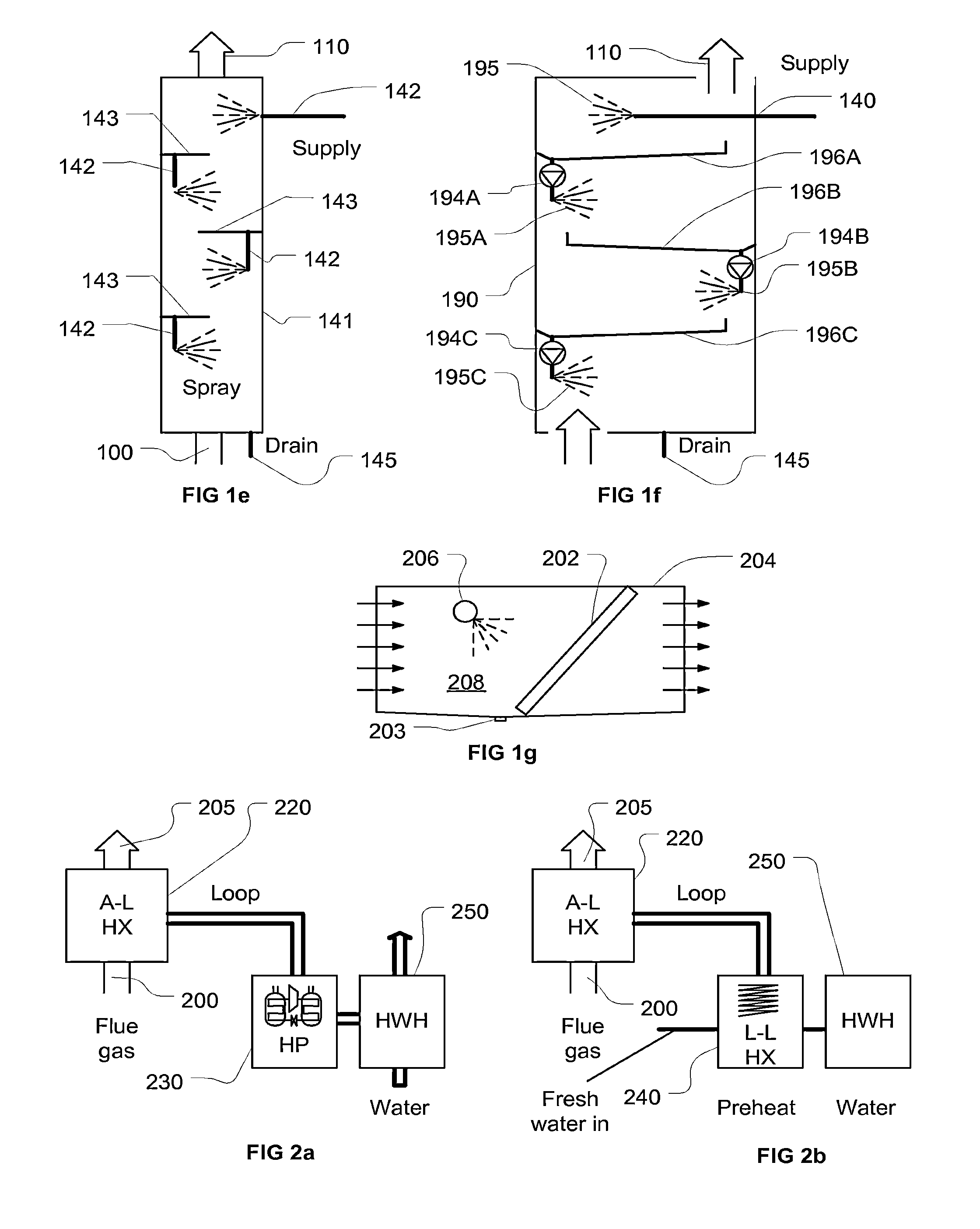Modular services supply arrangement
a technology of modules and services, applied in ventilation systems, household stoves or ranges, separation processes, etc., can solve the problems of hoods, hoods, and system energy loss, and achieve the effect of reducing the net energy loss of exhaust systems
- Summary
- Abstract
- Description
- Claims
- Application Information
AI Technical Summary
Benefits of technology
Problems solved by technology
Method used
Image
Examples
Embodiment Construction
[0074]In addition to the fouling problem, there is an opportunity cost and a disposal problem associated with the collection of “waste” heat. The heat collected from the heat exchanger can simply be discarded, for example, by sending consumed cooling water into a sewer or transferring heat from a coolant to ambient outdoor air using a liquid-air heat exchanger, or by transferring heat to other heat sinks, such as the earth, natural water bodies, cooling towers, etc. The opportunity associated with this disposal problem includes the re-use of the otherwise wasted materials and enthalpy, for example, grease, which can provide a source for biofuels, and heat. Another opportunity is that cleaning exhaust rather than simply sending into the environment, provides environmental benefits.
[0075]One group of applications that motivate the embodiments in the instant specification are those where permanent connection to an exhaust system is either undesirable or impossible. These are so-called ...
PUM
 Login to View More
Login to View More Abstract
Description
Claims
Application Information
 Login to View More
Login to View More - R&D
- Intellectual Property
- Life Sciences
- Materials
- Tech Scout
- Unparalleled Data Quality
- Higher Quality Content
- 60% Fewer Hallucinations
Browse by: Latest US Patents, China's latest patents, Technical Efficacy Thesaurus, Application Domain, Technology Topic, Popular Technical Reports.
© 2025 PatSnap. All rights reserved.Legal|Privacy policy|Modern Slavery Act Transparency Statement|Sitemap|About US| Contact US: help@patsnap.com



